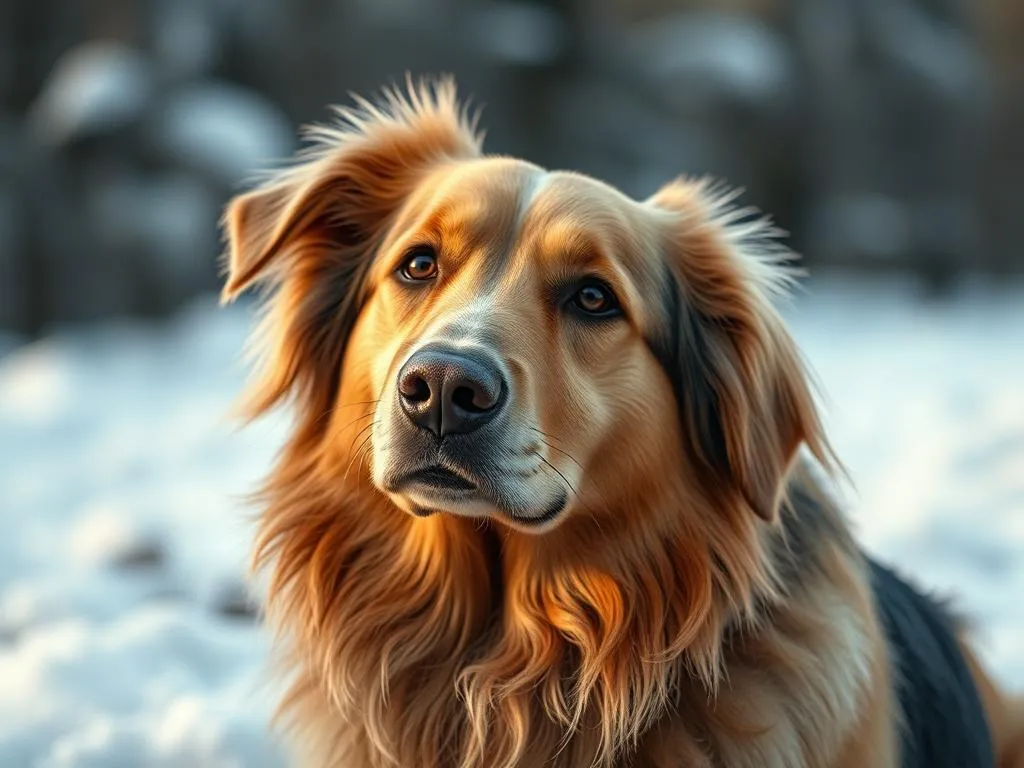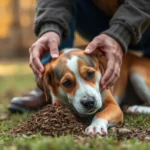
Introduction
Gastric Dilatation-Volvulus (GDV) is a severe and life-threatening condition affecting dogs, particularly known for its sudden onset and rapid progression. This medical emergency occurs when a dog’s stomach fills with gas, causing it to expand and potentially twist on itself, leading to impaired blood circulation and severe internal pressure. Recognizing the signs of GDV in dogs is crucial, as prompt action can be the difference between life and death.
GDV is relatively common, particularly among certain breeds. It predominantly affects deep-chested dogs, such as Great Danes, Doberman Pinschers, and St. Bernards. These breeds have a higher anatomical predisposition, making them more susceptible to developing this condition. Understanding the prevalence and risk factors associated with GDV in dogs is essential for all dog owners to ensure their pets’ safety and health.
This article aims to provide a comprehensive guide for dog owners to understand GDV, its symptoms, diagnosis, treatment options, and preventive measures. By fostering awareness and encouraging prompt action, we can work towards preventing tragic outcomes associated with this serious condition.
Understanding GDV
What is GDV?
Gastric Dilatation-Volvulus is characterized by two primary physiological changes: gastric dilatation, where the stomach fills with gas and expands, and volvulus, where the stomach twists around itself. This twisting can obstruct blood flow to the stomach and other vital organs, leading to tissue necrosis, shock, and, if untreated, death.
During GDV, the increased pressure within the stomach can also compromise the diaphragm, making it difficult for the dog to breathe. The rapid progression of GDV in dogs often leads to irreversible damage, making immediate veterinary intervention essential.
Symptoms of GDV
Recognizing the symptoms of GDV in dogs is vital for timely treatment. Physical signs typically include:
- Abdominal swelling: The dog’s stomach may appear distended and bloated.
- Restlessness or pacing: Affected dogs often seem unable to settle down, displaying signs of anxiety.
- Non-productive vomiting: The dog may attempt to vomit but produce little to no material.
Behavioral symptoms may also indicate GDV:
- Signs of distress or pain: Dogs may whine, whimper, or show signs of discomfort.
- Uncharacteristic lethargy: A previously active dog may become unusually tired or unresponsive.
If you observe any combination of these symptoms, seeking immediate veterinary care is crucial. GDV can progress rapidly, and waiting too long can lead to severe complications.
Diagnosis of GDV
How GDV is Diagnosed
When a dog is presented with symptoms suggestive of GDV, a veterinarian conducts a thorough examination. During a physical exam, the vet will assess the dog’s abdomen for distension and listen for abnormal sounds, which may indicate gas buildup.
Diagnostic Tests
To confirm the diagnosis of GDV in dogs, veterinarians commonly utilize X-rays. These imaging tests can reveal the characteristic signs of a twisted stomach and help evaluate the extent of gastric dilation. In some cases, blood tests may also be conducted to assess the dog’s overall health and identify any complications, such as shock or dehydration.
Treatment Options for GDV
Emergency Treatment
Once a diagnosis of GDV is confirmed, emergency treatment must begin immediately. The initial steps taken by the veterinarian aim to stabilize the dog and relieve the pressure in the stomach. This may involve:
- Decompression: The vet may insert a large needle into the stomach to release built-up gas.
- Fluid therapy: Intravenous fluids may be administered to combat shock and rehydrate the dog.
Surgery
Surgery is often required to correct the volvulus and prevent recurrence. The surgical procedure, known as gastropexy, involves attaching the stomach to the abdominal wall to prevent it from twisting again in the future. While surgery is the most effective treatment for GDV in dogs, it does carry some risks, including anesthesia complications and post-operative infections.
However, the benefits of surgical intervention typically far outweigh the risks, especially given the life-threatening nature of GDV.
Post-Surgery Care
Recovery Process
After surgery, the recovery process is crucial. Expect your dog to be monitored closely for signs of complications such as infection or reoccurrence of GDV. The veterinarian will provide guidelines on post-operative care, including pain management and activity restrictions.
Long-Term Management
Long-term management of dogs that have experienced GDV involves dietary adjustments and regular veterinary check-ups. Feeding smaller, more frequent meals can help reduce the risk of recurrence. Additionally, maintaining a healthy weight through proper diet and exercise is essential for overall health.
Prevention of GDV
Risk Reduction Strategies
Preventing GDV in dogs starts with understanding dietary and lifestyle choices that can mitigate risk.
Dietary Recommendations
- Safe feeding practices: Feed smaller meals throughout the day rather than one large meal. This approach reduces the likelihood of gastric dilation.
- Avoid exercise after eating: Ensure that dogs rest after meals and avoid strenuous activity to minimize the risk of twisting.
Lifestyle Adjustments
Maintaining a healthy weight is critical in preventing GDV. Overweight dogs are at a higher risk of developing various health issues, including GDV. Regular veterinary check-ups can help monitor weight and overall health.
Veterinary Recommendations
Routine check-ups with a veterinarian are essential for early detection of any potential health issues. Discussing breed-specific risks with breeders and vets can also provide valuable insights into preventive measures tailored to your dog’s needs.
FAQs about GDV
Common Questions Owners Ask
-
What to do if you suspect GDV?
If you suspect your dog is experiencing GDV, seek immediate veterinary care. Time is of the essence, and prompt treatment is critical. -
Can GDV happen again after treatment?
Yes, dogs can experience GDV again, especially if they have not undergone a gastropexy. Adhering to preventive measures can significantly reduce this risk. -
What breeds are most susceptible to GDV?
Deep-chested breeds such as Great Danes, Doberman Pinschers, and Boxers are at a higher risk for developing GDV. However, any dog can potentially develop this condition.
Conclusion
Understanding GDV in dogs is crucial for every dog owner. Recognizing the symptoms and acting quickly can save a dog’s life. Awareness and education about GDV can empower pet owners to take proactive measures to protect their beloved companions.
Regular veterinary check-ups, dietary management, and lifestyle adjustments are essential components of preventive care. By remaining vigilant and informed, you can help ensure your dog remains healthy and safe from this serious condition. Remember, your awareness and prompt action can make all the difference when it comes to GDV in dogs.









